Tim McGiven's Blog, page 18
April 1, 2024
A Visit to Where the Cloud Touches the Ground
Hi there! I’m Zander Rose and I’ve recently started at Automattic to work on long-term data preservation and the evolution of our 100-Year Plan. Previously, I directed The Long Now Foundation and have worked on long-term archival projects like The Rosetta Project, as well as advised/partnered with organizations such as The Internet Archive, Archmission Foundation, GitHub Archive, Permanent, and Stanford Digital Repository. More broadly, I see the content of the Internet, and the open web in particular, as an irreplaceable cultural resource that should be able to last into the deep future—and my main task is to make sure that happens.
I recently took a trip to one of Automattic’s data centers to get a peek at what “the cloud” really looks like. As I was telling my family about what I was doing, it was interesting to note their perception of “the cloud” as a completely ephemeral thing. In reality, the cloud has a massive physical and energy presence, even if most people don’t see it on a day-to-day basis.
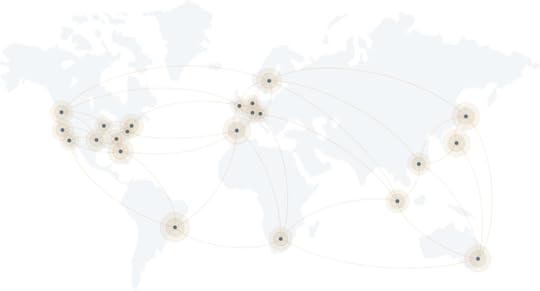 Automattic’s data center network. You can see a real-time traffic map right here.A trip to the cloud
Automattic’s data center network. You can see a real-time traffic map right here.A trip to the cloudGiven the millions of sites hosted by Automattic, figuring out how all that data is currently served and stored was one of the first elements I wanted to understand. I believe that the preservation of as many of these websites as possible will someday be seen as a massive historic and cultural benefit. For this reason, I was thankful to be included on a recent meetup for WordPres.com’s Explorers engineering team, which included a tour of one of Automattic’s data centers.
The tour began with a taco lunch where we met amazing Automatticians and data center hosts Barry and Eugene, from our world-class systems and operations team. These guys are data center ninjas and are deeply knowledgeable, humble, and clearly exactly who you would want caring about your data.
The data center we visited was built out in 2013 and was the first one in which Automattic owned and operated its servers and equipment, rather than farming it out. By building out our own infrastructure, it gives us full control over every bit of data that comes in and out, as well as reduces costs given the large amount of data stored and served. Automattic now has a worldwide network of 27 data centers that provide both proximity and redundancy of content to the users and the company itself.
The physical building we visited is run by a contracted provider, and after passing through many layers of security both inside and outside, we began the tour with the facility manager showing us the physical infrastructure. This building has multiple customers paying for server space, with Automattic being just one of them. They keep technical staff on site that can help with maintenance or updates to the equipment, but, in general, the preference is for Automattic’s staff to be the only ones who touch the equipment, both for cost and security purposes.
The four primary things any data center provider needs to guarantee are uninterruptible power, cooling, data connectivity, and physical security/fire protection. The customer, such as Automattic, sets up racks of servers in the building and is responsible for that equipment, including how it ties into the power, cooling, and internet. This report is thus organized in that order.
PowerOn our drive in, we saw the large power substation positioned right on campus (which includes many data center buildings, not just Automattic’s). Barry pointed out this not only means there is a massive amount of power available to the campus, but it also gets electrical feeds from both the east and west power grids, making for redundant power even at the utility level coming into the buildings.
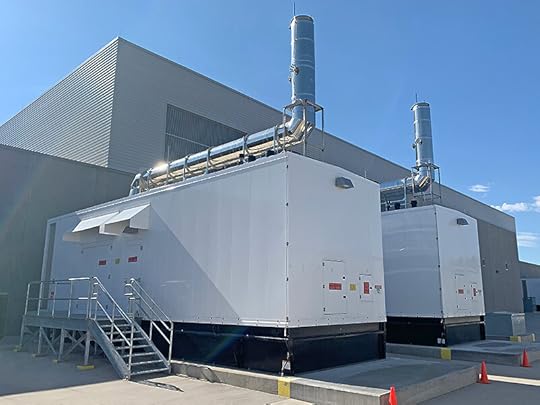 The data center’s massive generators.
The data center’s massive generators.One of the more unique things about this facility is that instead of battery-based instant backup power, it uses flywheel storage by Active Power. This is basically a series of refrigerator-sized boxes with 600-pound flywheels spinning at 10,000 RPM in a vacuum chamber on precision ceramic bearings. The flywheel acts as a motor most of the time, getting fed power from the network to keep it spinning. Then if the power fails, it switches to generator mode, pulling energy out of the flywheel to keep the power on for the 5-30 seconds it takes for the giant diesel generators outside to kick in.
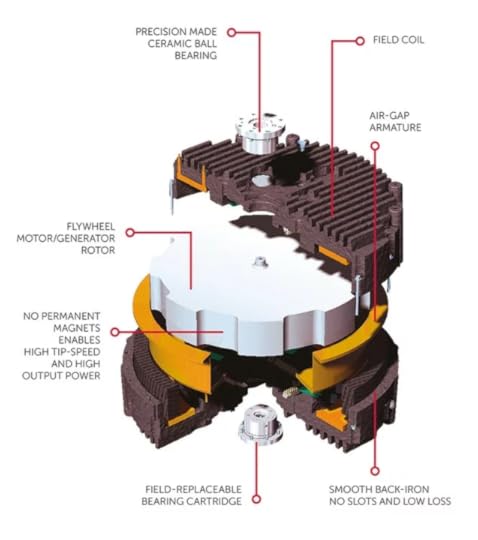 Flywheel energy storage diagram.
Flywheel energy storage diagram. Those generators are the size of semi-truck trailers and supply four megawatts each, fueled by 4,500-gallon diesel tanks. That may sound like a lot, but that basically gives them 48 hours of run time before needing more fuel. In the midst of a large disaster, there could be issues with road access and fuel shortages limiting the ability to refuel the generators, but in cases like that, our network of multiple data centers with redundant capabilities will still keep the data flowing.
CoolingDepending on outside ambient temperatures, cooling is typically around 30% of the power consumption of a data center. The air chilling is done through a series of cooling units supplied by a system of saline water tanks out by the generators.
Barry and Eugene pointed out that without cooling, the equipment will very quickly (in less than an hour) try to lower their power consumption in response to the heat, causing a loss of performance. Barry also said that when they start dropping performance radically, it makes it more difficult to manage than if the equipment simply shut off. But if the cooling comes back soon enough, it allows for faster recovery than if hardware was fully shut off.
Handling the cooling in a data center is a complicated task, but this is one of the core responsibilities of the facility, which they handle very well and with a fair amount of redundancy.
Data connectivityData centers can vary in terms of how they connect to the internet. This center allows for multiple providers to come into a main point of entry for the building.
Automattic brings in at least two providers to create redundancy, so every piece of equipment should be able to get power and internet from two or more sources at all times. This connectivity comes into Automattic’s equipment over fiber via overhead raceways that are separate from the power and cooling in the floor. From there it goes into two routers, each connected to all the cabinets in that row.
Server areaAs mentioned earlier, this data center is shared among several tenants. This means that each one sets up their own last line of physical security. Some lease an entire data hall to themselves, or use a cage around their equipment; some take it even further by obscuring the equipment so you cannot see it, as well as extending the cage through the subfloor another three feet down so that no one could get in by crawling through that space.

Automattic’s machines took up the central portion of the data hall we were in, with some room to grow. We started this portion of the tour in the “office” that Automattic also rents to both store spare parts and equipment, as well as provide a quiet place to work. On this tour it became apparent that working in the actual server rooms is far from ideal. With all the fans and cooling, the rooms are both loud and cold, so in general you want to do as much work outside of there as possible.
What was also interesting about this space is that it showed all the generations of equipment and hard drives that have to be kept up simultaneously. It is not practical to assume that a given generation of hard drives or even connection cables will be available for more than a few years. In general, the plan is to keep all hardware using identical memory, drives, and cables, but that is not always possible. As we saw in the server racks, there is equipment still running from 2013, but these will likely have to be completely swapped in the near future.
Barry also pointed out that different drive tech is used for different types of data. Images are stored on spinning hard drives (which are the cheapest by size, but have moving parts so need more replacement), and the longer lasting solid state disk (SSD) and non-volatile memory (NVMe) technology are used for other roles like caching and databases, where speed and performance are most important.
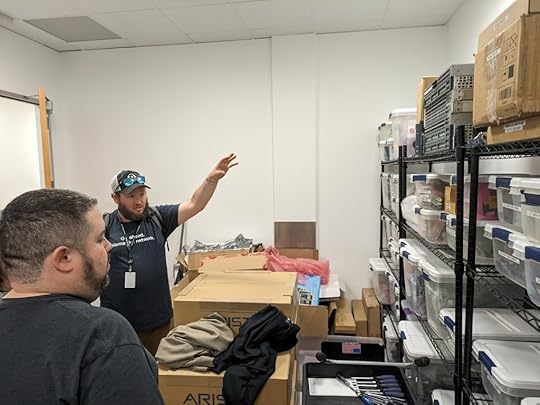 Barry showing us all the bins of hardware they use to maintain the servers.
Barry showing us all the bins of hardware they use to maintain the servers.Barry explained that data at Automattic is stored in multiple places in the same data center, and redundantly again at several other data centers. Even with that much redundancy, a further copy is stored on an outside backup. Each one of the centers Automattic uses has a method of separation, so it is difficult for a single bug to propagate between different facilities. In the last decade, there’s only been one instance where the outside backup had to come into play, and it was for six images. Still, Barry noted that there can never be too many backups.
An infrastructure for the futureAnd with that, we concluded the tour and I would soon head off to the airport to fly home. The last question Barry asked me was if I thought this would all be around in 100 years. My answer was that something like it most certainly will, but that it would look radically different, and may be situated in parts of the world with more sustainable cooling and energy, as more of the world gets large bandwidth connections.
As I thought about the project of getting all this data to last into the deep future, I was very impressed by what Automattic has built, and believe that as long as business continues as normal, the data is incredibly safe. However, on the chance that things do change, I think developing partnerships with organizations like The Internet Archive, Permanent.org, and perhaps national libraries or large universities will be critically important to help make sure the content of the open web survives well into the future. We could also look at some of the long-term storage systems that store data without the need for power, as well as systems that cannot be changed in the future (as we wonder if AI and censorship may alter what we know to be “facts”). For this, we could look at stable optical systems like Piql, Project Silica, and Stampertech. It breaks my heart to think the world would have created all this, only for it to be lost. I think we owe it to the future to make sure as much of it as possible has a path to survive.
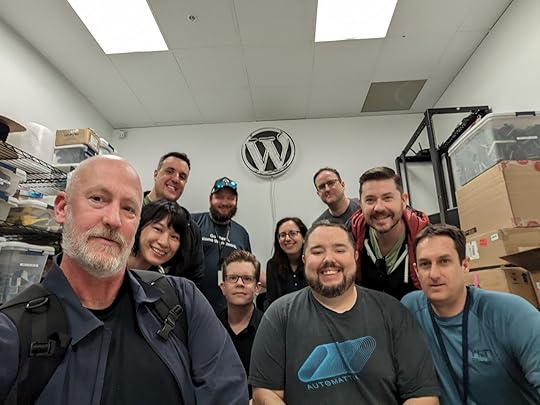 Our group of Automatticians enjoyed the tour—thank you Barry and Eugene!
Our group of Automatticians enjoyed the tour—thank you Barry and Eugene!
March 28, 2024
5 Hidden Features of WordPress.com
Isn’t it amazing how you can learn new things about someone, even after years of knowing them? That’s how Jamie Marsland has felt in the last few weeks while diving deeper into WordPress.com’s capabilities. In today’s Build and Beyond video, he shares five incredible features built right into the platform that aren’t as well known as they should be. Whether you’re a blogger, a developer, or fall somewhere between, you’re likely to discover something new and useful.
Ready to build on WordPress.com? Start a free trial today:
Start free trialMarch 27, 2024
Hot Off the Press: New WordPress.com Themes for March 2024
The WordPress.com team is always working on new design ideas to bring your website to life. Check out the latest themes in our library, including great options for small businesses, sports fan, nostalgic bloggers, and more.
All WordPress.com ThemesFeelin’ Good
Feelin’ Good is a vibrant (to say the least!) blog theme with a bold vaporwave aesthetic. Its nostalgic atmosphere pays homage to the daring, over-the-top visual art and advertisements of the ’80s and early ’90s. We’ve combined a lot of elements that shouldn’t work together, but do. If you’re looking for a dynamic, attention-grabbing, eye-popping visual feast of a theme, try Feelin’ Good.
Click here to view a demo of this theme.
Low Fi
Low Fi is a simple blog theme featuring a narrow column layout that’s optimized for seamless browsing on mobile devices. With six style variations, you’re sure to find a palette you’re drawn to. Taking inspiration from the lo-fi beats music scene, the theme’s design cues, such as the square header image, offer a nod to album artwork.
The overall aesthetic is deliberately understated, with each element—from the muted color schemes to the textured background—crafted to evoke a sense of nostalgia and warmth.
Click here to view a demo of this theme.
Cakely
Cakely is the ultimate WordPress theme designed specifically for passionate bakers, cake enthusiasts, and dessert lovers. Tailored for small businesses aiming to shine in the world of sweets, Cakely effortlessly combines style and functionality to showcase mouthwatering creations. Its vibrant pink color scheme exudes joy while maintaining a classy, clean layout with easy navigation. This theme ultimately strikes the perfect balance between professionalism and playfulness, making it an ideal choice for showcasing your delicious masterpieces.
Click here to view a demo of this theme.
Treehouse
Treehouse is a carefree, fun, and friendly theme ideal for Woo stores selling children’s products. With its unlimited customization options, Treehouse enables you to set up an online shop with just a few clicks. Utilizing a soft color palette, playful design details, and simplified layouts, your site will attract a wide range of customers, from young parents to over-the-moon grandparents. This theme is fully responsive and cross-browser compatible.
Click here to view a demo of this theme.
Infield
Major League Baseball’s 2024 season kicks off on Thursday, March 28. What better way to show your home team the love it deserves than with a baseball-themed fan site! With a somewhat old-school layout, this theme evokes some of the classic sports sites of the ’90s, back before fantasy leagues took over. The header and accent colors are customizable, ensuring that your favorite crew is properly saluted.
Click here to view a demo of this theme.
To install any of the above themes, click the name of the theme you like, which brings you right to the installation page. Then click the “Activate this design” button. You can also click “Open live demo,” which brings up a clickable, scrollable version of the theme for you to preview.
Premium themes are available to use at no extra charge for customers on the Explorer plan or above. Partner themes are third-party products that can be purchased for $79/year each.
You can explore all of our themes by navigating to the “Themes” page, which is found under “Appearance” in the left-side menu of your WordPress.com dashboard. Or you can click below:
All WordPress.com ThemesMarch 26, 2024
15 WordPress Pro Developers You Should Follow in 2024
WordPress is so powerful and versatile that the WP community can sometimes seem like a vast ocean of people, information, and resources. In today’s Build and Beyond video, Jamie Marsland shares 15 of the most influential developers he follows to keep on top of new features, learn cool new tips, and, ultimately, get the most out of WordPress.
Of course, we couldn’t feature all the great people in this space, so be sure to comment below with your favorite WordPress-related follows.
Ready to build on WordPress.com? Start a free trial today:
Start free trialHere are the folks mentioned, as well as where to find them on the web:
Nick Diego
nickdiego.com
twitter.com/nickmdiego
Sarah Norris
Brian Coords
youtube.com/@BrianCoords
twitter.com/briancoords
Carolina Nymark
fullsiteediting.com
twitter.com/carolinapoena
James Kemp
jameskemp.blog
twitter.com/jamesckemp
Anne Bovelett
annebovelett.de/en
twitter.com/bovelett
Justin Tadlock
justintadlock.com
twitter.com/justintadlock
Ryan Welcher
ryanwelcher.com
youtube.com/@ryanwelchercodes
Aki Hamano
Aurooba Ahmed
twitter.com/aurooba
youtube.com/@AuroobaMakes
Eric Karkovack
twitter.com/karks88
twitter.com/speckyboy
Keith Devon and Mark Wilkinson
Joost de Valk
joost.blog
twitter.com/jdevalk
Elliot Richmond
youtube.com/@elliottrichmondwp
Rich Tabor
rich.blog
twitter.com/richard_tabor
Jessica Lyschik
March 21, 2024
WordPress Block Themes Explained in 250 Seconds
WordPress block-based themes allow you to build and customize your website visually, removing the need for code-based tailoring. Fully integrated with the Site Editor, block themes give an unprecedented level of visual control over the layout and style of your site.
In this “Build and Beyond” video, Jamie Marsland walks you through everything you need to know about editing, customizing, and designing every element of your WordPress site using blocks in just 250 seconds. You’ll also get a few sneak peeks of some theme-related features coming in WordPress 6.5 (which will be released March 26, 2024!).
Ready to build on WordPress.com? Start a free trial today:
Start free trialMarch 19, 2024
“Do the Woo” Finds Its Home at WordPress.com
Bob Dunn loved designing, but didn’t fancy himself a coder. In the early 2000s, while struggling to create a website for his business, he thought to himself, “There’s got to be something better.” When Bob discovered WordPress in 2006, he realized he had discovered that better solution. With WordPress, he could build great-looking sites from scratch without needing to hand-code the entire thing.
In 2010, Bob dove headfirst into the world of WordPress, officially putting his print design business on the backburner and branding himself as “BobWP.” What started as site designing, consulting, and community building would eventually turn into podcasting. But it wasn’t until he discovered WooCommerce that he felt he’d really found his niche.
Bob had used WooCommerce as a product since its launch and saw a need within the larger WordPress community for a Woo-dedicated space to bring developers, builders, and agencies together. Do the Woo was born, and Bob began his journey to create a podcast voiced by and for the vibrant WooCommerce and WordPress communities.
As Do the Woo has grown to fourteen unique shows with dozens of co-hosts and countless guests over the years, Bob has been looking for the right online space to call home. He needed a website host that would allow him to easily maintain and market his podcast, allowing him to focus on the community-centered content that makes his podcast so valuable. He found that home at WordPress.com, where he’s been able to utilize a variety of back-end tools to help create a simple and welcoming front-end user experience.
The teams here at WordPress.com, Woo, and Jetpack are proud to partner with Bob. Do the Woo is providing an essential resource to the Woo and WordPress communities. Not only is he creating a unique space for these conversations to happen, but he’s amplifying the voices of those who want to give podcasting a shot. And take heed, velvet-voiced folks out there: he’s always looking for co-hosts!
Are you ready for your own entrepreneurial journey to begin? Use coupon code dothewoo15 at checkout for 15% off any WordPress.com plan. Click below to take advantage of this special offer:
Get 15% offMarch 18, 2024
Just Launched: GitHub Deployments
Say goodbye to the hassle of manual file uploads and tedious deployments, and say hello to WordPress.com’s new GitHub Deployments.
With GitHub Deployments, you can seamlessly connect your repository to your WordPress.com site in just a few clicks. Now you can focus on what you do best: writing outstanding code. Each time you push a change to your GitHub repository, it will be deployed to your WordPress.com site automatically or upon request.
Check out this video overview from Paulo Trentin, one of the developers who worked on this feature:
Here are three reasons why we know you’re going to love GitHub Deployments on WordPress.com:
1. A streamlined workflowGitHub Deployments help you manage your site’s code in a reliable, predictable, and automated way using version control instead of older or manual mechanisms, such as FTP or SSH tools. In its simplest form, it doesn’t require a workflow file like our previous GitHub integration, which relied on a GitHub action; instead, you can connect and deploy in just a few clicks, all within your WordPress.com dashboard.
This is a welcome change for developers who want to simplify their code deployment process and migrate away from the manual operations and error-prone nature of SFTP and SSH transfers.
GitHub Deployments also allows you to connect multiple repositories to a single site, encouraging code reusability between the sites you manage. Want to deploy a plugin or theme to multiple sites with a single branch push? Have at it! Want to manage your entire site’s code from a GitHub repository? We’ve got you covered!
2. Run checks and tasksGitHub Deployments also gives you the power to process files and run tasks before transferring the files to your WordPress.com site through GitHub workflows. This helps ensure that all team members publish code following your chosen patterns and expectations, for example.
If that’s your thing, you can install Composer dependencies and run any command supported by GitHub actions prior to sending any code updates to your site. Find a few of our favorite workflow recipes here.
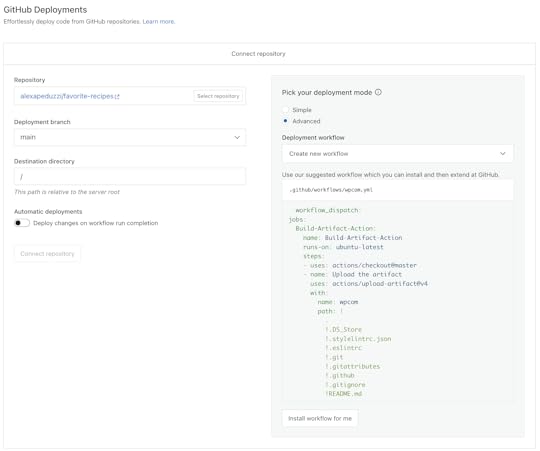
Three cheers for unified, well-written code!
3. Deploy the way you wantYou can adjust the deployment settings for each repository, giving you complete control over how your code is shipped.
You can choose to automatically deploy changes to your WordPress.com site as soon as code is committed to your repository, or you can request deployments manually. Manual deployments give you the most control over when your code changes are pushed live, as you’ll use the GitHub Deployments interface to trigger a deployment. We recommend manual deployments if you don’t want to use a staging site.

In general, automatic deployments are not recommended for live production sites, as any changes to the code in the repository are automatically deployed from GitHub to the live site. Instead, you may decide to automatically deploy first to a staging site and then sync the staging site to production once you’re ready.
That said, choose your own adventure and deploy on your own terms.
Do your thing, and we’ll handle the restDevelopment on WordPress.com has never been easier. Say goodbye to manual deployments and hello to more efficient collaboration, streamlined version control, and the peace of mind that comes with knowing your project data is secure.
Get instant access to our new GitHub Deployments with a Creator or Entrepreneur plan (did you know we have a 14-day refund policy?).
Ready to try GitHub Deployments out for yourself? Click here to start deploying, and learn more by reading our developer documentation.
Major kudos to the GitHub Deployments team on this launch! Paulo Trentin, Jeroen Pfeil, Kenroy Mcleish, Mike Kelly, Javier Arce, Jeff Sanquist, Alexa Peduzzi, Jeremy Anderberg, and our beta testers.
March 14, 2024
Re-Creating The New York Times’ Website in Under 30 Minutes Using WordPress.com
In this “Build and Beyond” video, Jamie Marsland re-creates The New York Times’ website in less than 30 minutes using WordPress.com. By utilizing mega menus, master layouts, typography controls, and post grids, Jamie shows us what’s possible with the limitless customizations available with WordPress.
When it comes to mega menus, specifically, it’s worth noting that this is a highly complex customization that should only be attempted by WordPress pros and is mainly shown here as a demo of what’s possible. Please read this blog post on the WordPress.org developer blog before embarking on your own mega menu.
To learn more and get started on your own site today, click below:
Start buildingMarch 13, 2024
WordCamp Asia 2024: The WordPress Community Comes Together in Taipei
This year’s WordCamp Asia was held in Taipei, the vibrant capital city of Taiwan. Members from WordPress.com joined other Automatticians, as well as around 2,000 other attendees from across 70 countries to connect, learn, build, and give back to the platform that powers millions of top websites across the internet.

The event kicked off with Contributor Day, an opportunity for anyone in the WordPress community, from newcomers to seasoned experts, to get involved and contribute to WordPress. Contributing can mean contributing to code, but it can also mean sharing your expertise in design, offering support in forums, translating content, and much much more. This year’s Contributor Day had a fantastic turnout and it was amazing to see so many folks show up and participate!
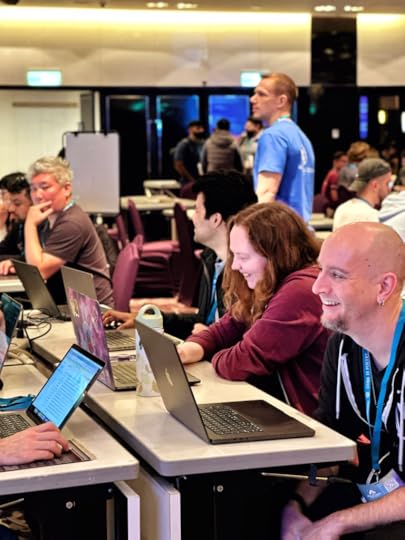
As always, there was a variety of informative and inspiring talks. Some of our favorites included talks about the future of WordPress, the multifaceted nature of design, building and maintaining WordPress sites with AI, achieving efficient workflows with the site editor, and the importance of diversity, equity, inclusion, and belonging in the tech and WordPress communities. If any of these topics pique your interest, you can take a look at the livestream recordings for these and all other WordCamp Asia 2024 talks here.

While our colleagues from the WordPress Project, Woo, and Jetpack participated in the event, folks from WordPress.com were also present, contributing, networking, and engaging with the community.

This year we were particularly interested in connecting with developers so that we could better understand their experiences with WordPress.com. Our hosting infrastructure, powered by WP Cloud, is best-in-class, yet the benefits aren’t as well-known in the developer community. To help get the word out about all of our developer-focused features, we’ve recently relaunched our developer site at developer.wordpress.com. Check it out to learn about staging sites, WP-CLI access, and Studio, our upcoming local development environment.
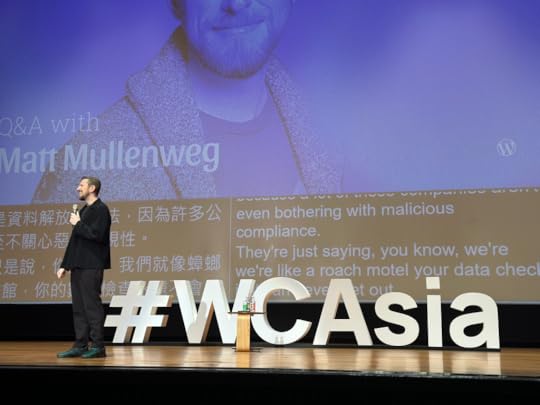
During the anticipated closing Q&A session at WordCamp Asia 2024, Matt Mullenweg, co-founder of WordPress and CEO of Automattic, opened up about his dreams for a web that’s both open and accessible to everyone. He shared how the core principles of open source are not just shaping WordPress but also knitting together a worldwide community of contributors.
That sense of community is something you can definitely feel at WordCamps. Thirty-six percent of attendees at this WordCamp were first-time participants—a testament to the event’s growing appeal and the ever-expanding WordPress community.
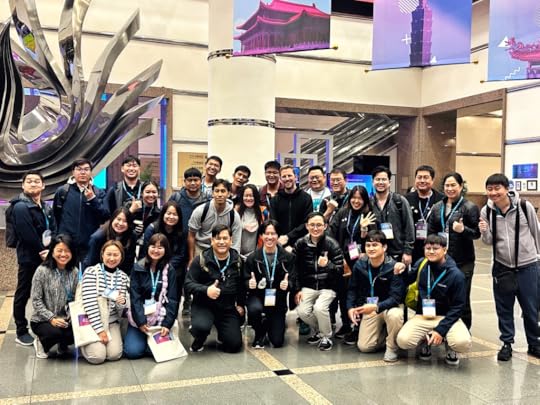
During the closing remarks, Matt revealed that State of the Word 2024 will be held in Tokyo, Japan. The lead organizers also revealed the next WordCamp Asia location: Manila, Philippines, in February 2025. With Manila’s rich tapestry of Spanish, European, American, and Asian influences, we’re in for a vibrant mix of culture, cuisine, and community!
But you don’t have to wait until 2025 to start getting involved. There’s a huge number of local and regional WordCamps happening year-round. Head over to https://central.wordcamp.org/ to find one near you. Whether you’re looking to develop your skills, learn something new, network with the community, there’s something for everyone. We hope to see you out there!
March 12, 2024
Introducing “Build and Beyond”: A New Video Series From WordPress.com and Jamie Marsland
Jamie Marsland has been preaching the WordPress gospel for over a decade and has trained thousands of people on blocks, plugins, and more. Through his popular YouTube channel and hands-on courses, Jamie provides incredible tutorials and breaks down the most common misconceptions about building with WordPress.
We’re happy to share that WordPress.com is partnering with Jamie over the next few months to create a series of videos that will show you how to get the most out of your website experience. From exciting new feature announcements to handy tips and tricks to Jamie’s mind-blowing “website re-creations,” we promise you’ll learn something new in every video.
Starting later this week, you’ll see those videos posted to both our own YouTube channel as well as this blog. Stay tuned!
Tim McGiven's Blog
- Tim McGiven's profile
- 1 follower



